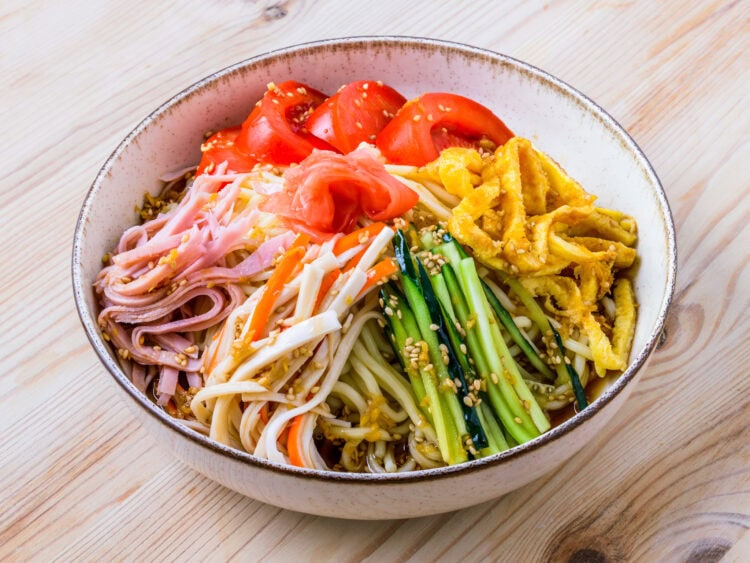A recipe for cold and super colorful ramen for enthusiasts who still want to enjoy it in summer without succumbing to excess heat!
Every year, it’s the same question. What can we prepare in this heat? We’re not very hungry, we don’t want something too heavy, or too rich… It’s quite a headache.
In summer, in Japan, they would serve you Hiyashi Chuka to counter the tropical climate. It’s fresh, complete, it remains nourishing without being too heavy and honestly, it’s super simple to make. In short, ramen isn’t just for gloomy days… It’s for all year round!
What is Hiyashi Chuka?
If you’re used to ramen, you might be a bit surprised by Hiyashi Chuka. Good news: your guests will be too! When you’re accustomed to hot and comforting ramen, and you have a cold and more colorful ramen dish in front of you, you’re likely to remember it for a while.
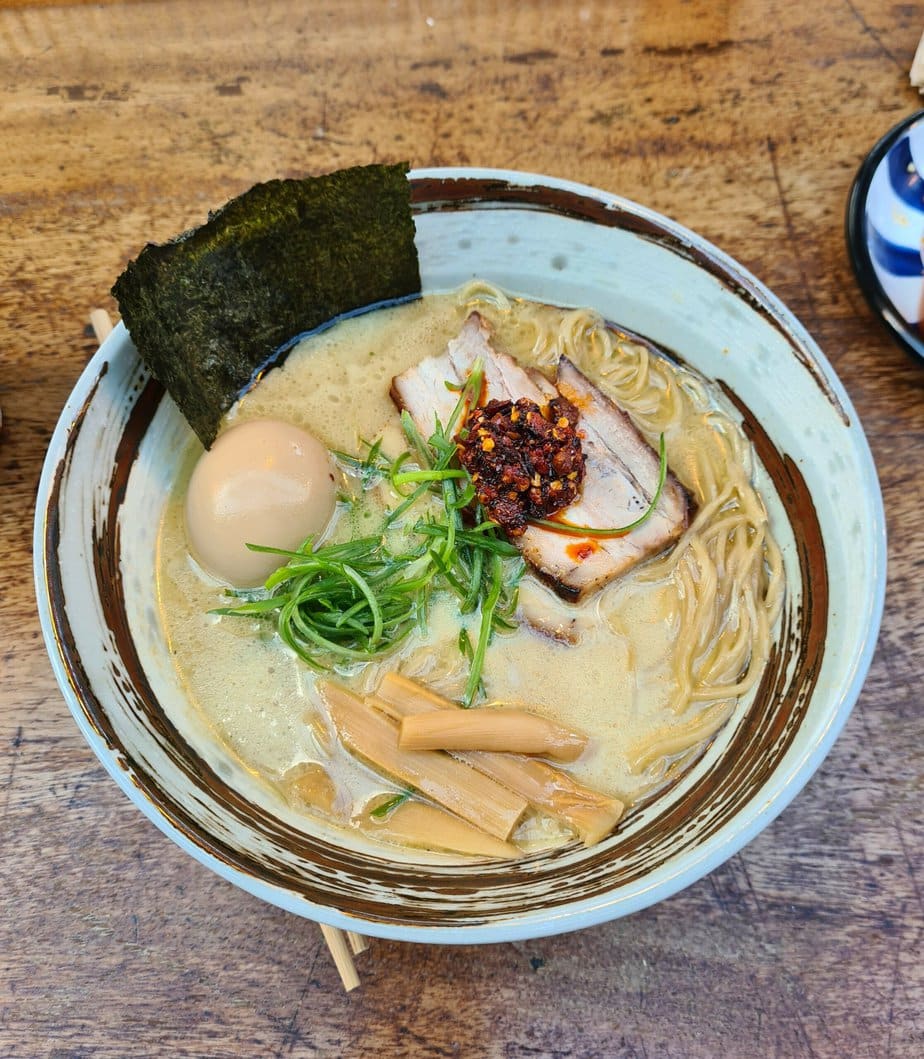
Hiyashi Chuka
are terms that directly refer to cold Chinese cuisine. Except that in reality, this dish refers to a popular Japanese summer dish, composed of cold ramen-type noodles accompanied by various toppings, such as omelet, cucumber, tomatoes, ham, surimi, sometimes crab instead of kamaboko.
Some even have fun adding Chashu, tofu, Mizuna, lettuce, nori… To this lovely mix is added a dressing based on soy sauce and rice vinegar, highlighting the sweet, salty, nutty and tangy flavors of Hiyashi Chuka.
Another significant aspect: we love this dish for both the refreshing, soft and tender side of the ramen, but also for the crunchy texture of the julienned vegetables. Hard not to succumb!
Where does Hiyashi Chuka come from?
It’s always a bit tricky to address this question. Does Hiyashi Chuka come from Japan or China? There are several beliefs about this. Some think that this dish was served for the very first time on the eve of World War II, in 1937, in a Chinese restaurant in the city of Sendai, Japan. It’s almost confusing us more.
Apparently, Chinese restaurants of the time didn’t offer a menu specially adapted to the summer period in Japan. The restaurant owner would have then invented a first version of Hiyashi Chuka which was called ryan ban men
.
It was served with a fresh sweet and sour soup based on soy sauce and vinegar. In terms of toppings, it had cucumbers and tomatoes as it does now, but cabbage and carrots were also added.
Another theory: Hiyashi Chuka would have first been invented in a Tokyo restaurant. Here too, the recipe would have been created around 1933 and would be inspired by the famous Chinese Ryan Ban Men and Japanese Zaru soba.
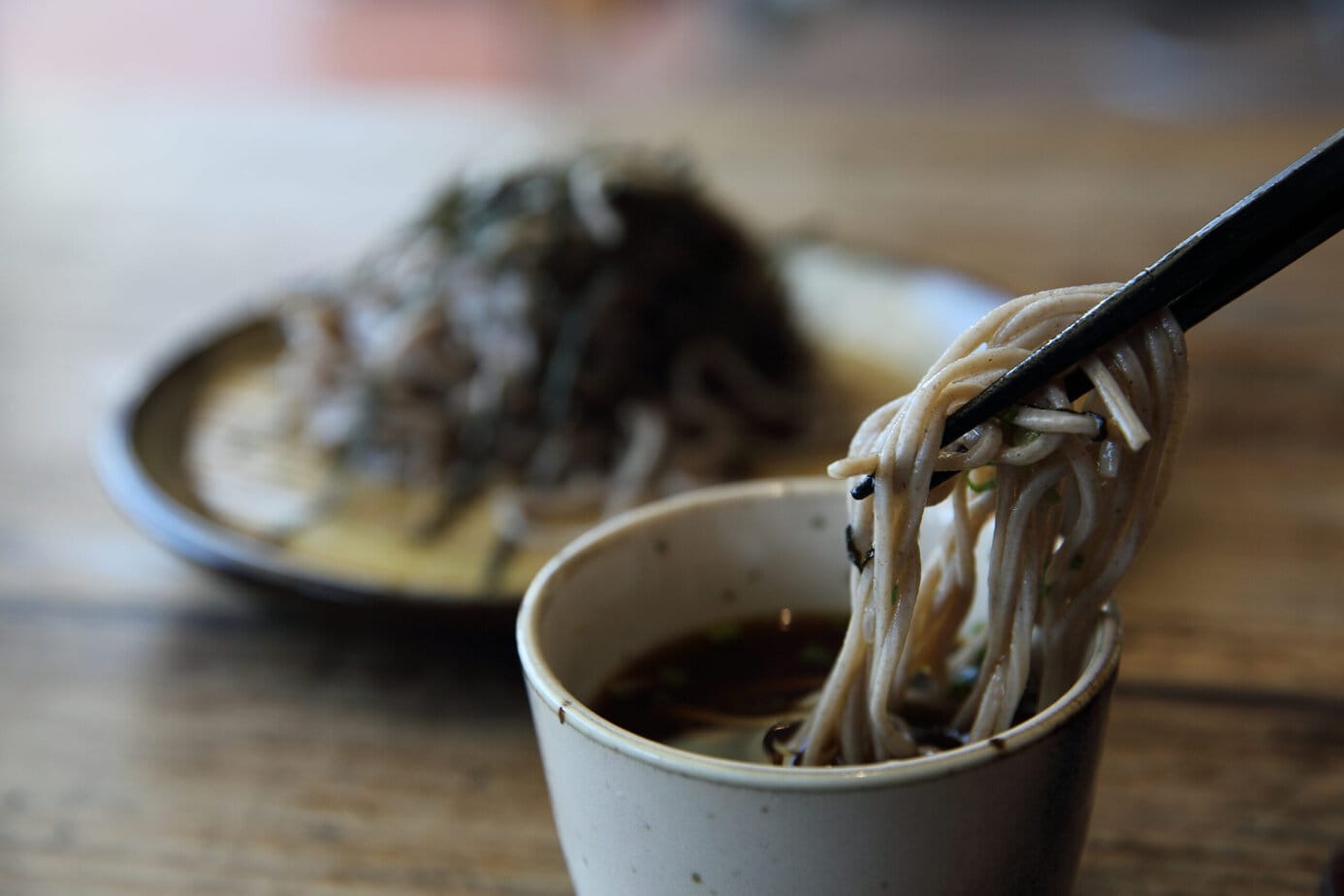
In any case, the arrangement of the toppings on the plate has become a characteristic feature of this recipe nowadays. For the anecdote: this arrangement; the vegetables in the shape of a mountain on the plate, would be largely inspired by Mount Fuji!
As you can see, Hiyashi Chuka is simply a combination of Japanese and Chinese culinary expertise for our greatest pleasure!
The Main Ingredients of Hiyashi Chuka
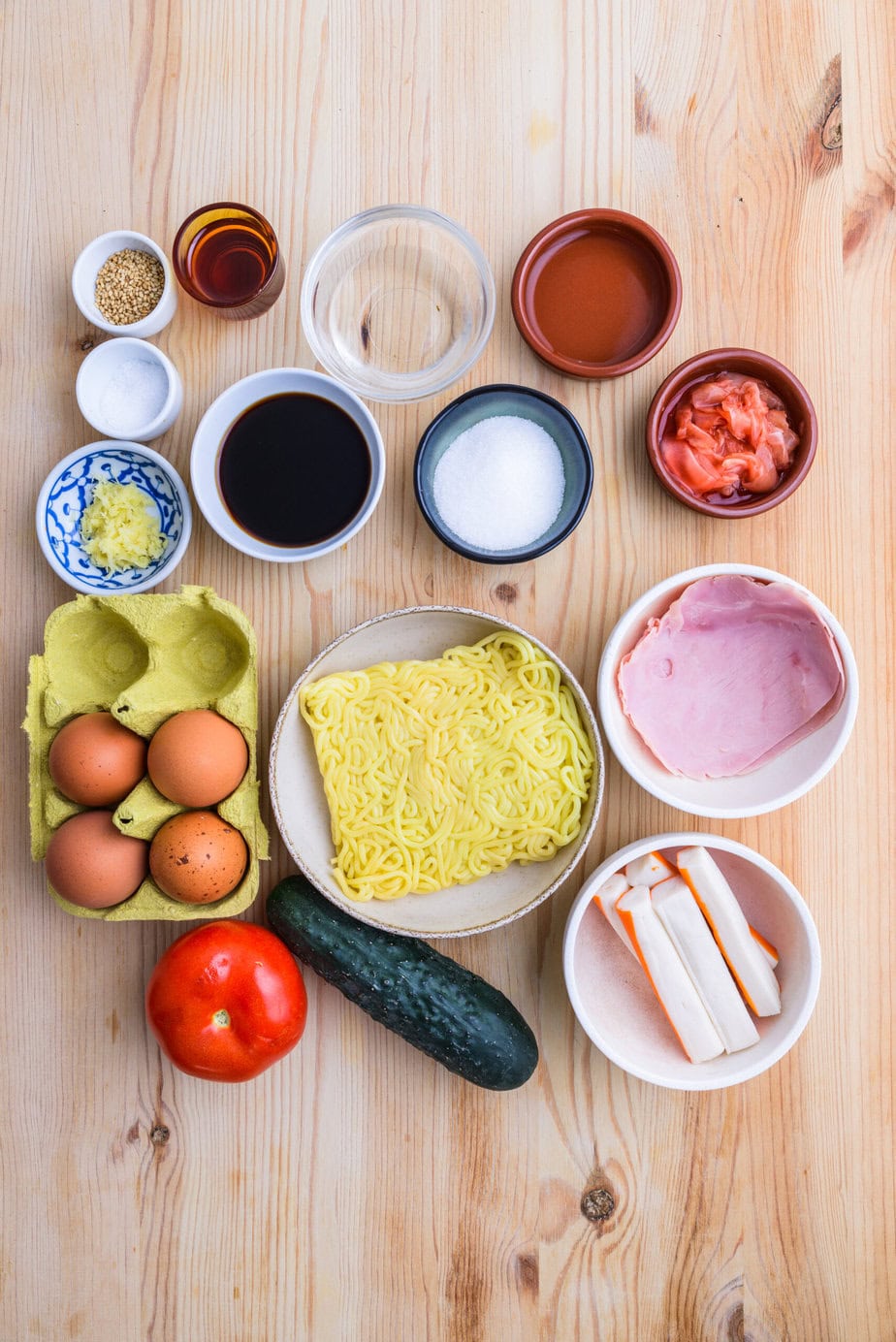
Ramen noodles: these are exactly the same as you use for hot ramen. They are also the ones you see most often on the market… so that’s convenient! You won’t miss them; they are sold in blocks, dry and yellowish most of the time. Follow my guide on Asian noodles and then, you’ll be unbeatable on the different types that exist!
Eggs: they are an omnipresent element in Japanese cuisine. Just look at the Tamago Sando, Omurice or Tamagoyaki. Let’s not forget that traditional Japanese ramen also features eggs; the famous Ajitsuke Tamago!
For Hiyashi Shuka, we’ll make an omelet that will be sliced afterwards. It’s different, but above all delicious and therefore just as effective!
Cucumbers and tomatoes: these are ingredients that are particularly well-suited for cold recipes like this one. They add freshness and crunch, which wouldn’t necessarily have been possible with a hot ramen recipe. And incidentally, these are typically the kind of ingredients we cook in all sorts of ways during summer!
Benishoga: even if it’s optional in this recipe, this ingredient has every reason to attract the most curious. It’s a type of tsukemono made from sliced ginger, colored red thanks to red shiso leaves and marinated in apricot vinegar (umezu).
Light soy sauce: the sauce is a super important element, given that it plays the role of replacing the broth used in hot ramen. It acts as a binder, therefore.
Light soy sauce is essential, especially for ramen, just salty enough to counterbalance the sweet flavors of the sauce. To add a Vietnamese touch, some use nuoc mam instead.
Rice vinegar: it’s the tangy touch of the sauce that ensures a perfect balance between sweet, salty, and spicy. I recommend white rice vinegar rather than black rice vinegar here. The latter is less suitable for dressings and sauces; we’ll use it more for dim sum.
Sesame oil: although it’s an oil with a rather neutral taste, it softens the sauce and adds a nutty flavor. With sesame seeds, it’s the winning combo.
Tips for Successful Hiyashi Shuka
The only constraint
is to let all the ingredients cool down properly. This can indeed take some time. The Hiyashi Shuka recipe is actually a matter of organization. So I recommend starting with the omelet and the dressing, which need to be refrigerated.
Moreover, slicing the omelet is a step that can also take some time. And no stress, it’s absolutely not difficult. While it’s cooling, you can tackle the vegetables.
Keep them cool afterwards as well; the result will only be better. As for the noodles, you just need to rinse them in cold water after cooking.
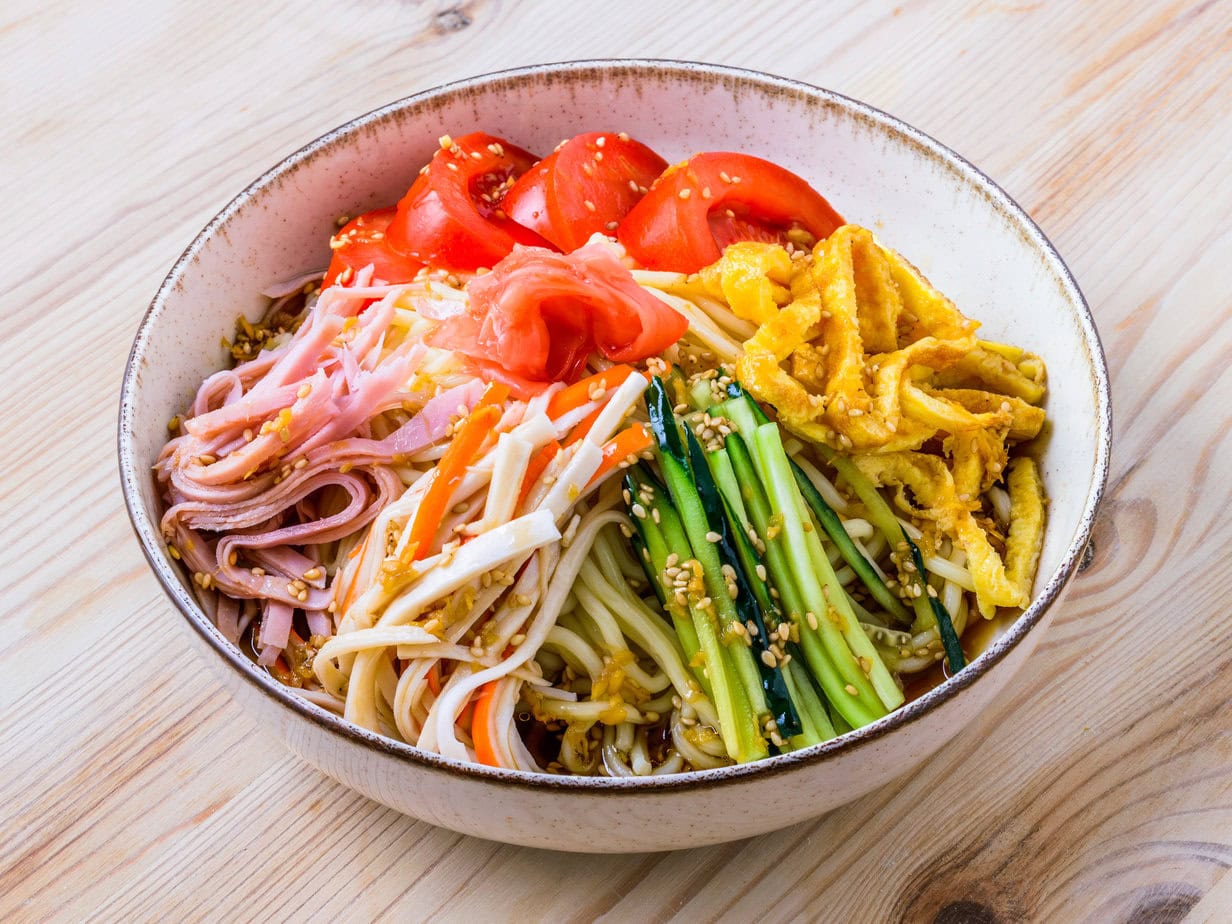
Authentic Hiyashi Chuka – Cold Ramen
Ingredients
Sauce
- 8 tablespoons light soy sauce
- 5 tablespoons of sugar
- 4 tablespoons rice vinegar
- 2 tablespoon water
- 2 tablespoon sesame oil
- 0.5 teaspoon of ginger grated
- 1 tablespoon of sesame seeds
Omelet
- 4 eggs
- 2 teaspoon of sugar
- 2 pinches salt
Other Ingredients
- 2 portions of Ramen Noodles
- 1 cucumber julienned
- 1 tomato cut into quarters
- 4 slices of ham thinly sliced
- 8 sticks of surimi shredded
- Benishoga pickled ginger, optional
Instructions
- Mix all the ingredients for the sauce and refrigerate.8 tablespoons light soy sauce, 5 tablespoons of sugar, 4 tablespoons rice vinegar, 2 tablespoon water, 2 tablespoon sesame oil, 0.5 teaspoon of ginger, 1 tablespoon of sesame seeds
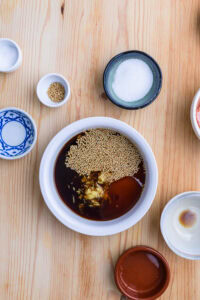
- Mix the ingredients for the omelet.4 eggs, 2 teaspoon of sugar, 2 pinches salt
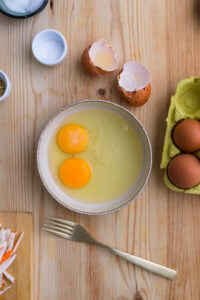
- Lightly oil your pan and pour in the egg mixture.
- Cover the pan and cook over medium-low heat until the omelet is cooked.
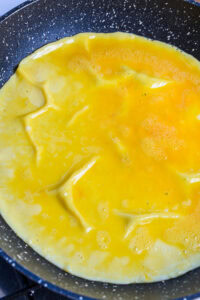
- Transfer to your work surface and cut the omelet into thin strips.
- Cook the noodles for 3 minutes or until al dente.2 portions of Ramen Noodles
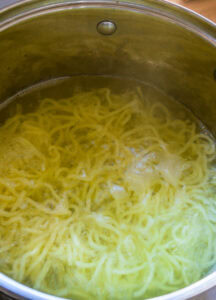
- Drain and plunge the noodles into ice water until they are well chilled.
- Drain the excess water well, then transfer the noodles to a deep plate. Meanwhile, cut the ingredients as indicated in the list1 cucumber, 1 tomato, 4 slices of ham, 8 sticks of surimi
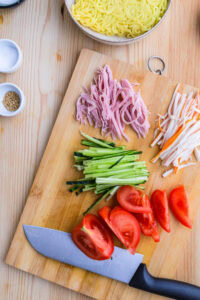
- Garnish with julienned cucumbers, tomato quarters, sliced ham, and surimi.
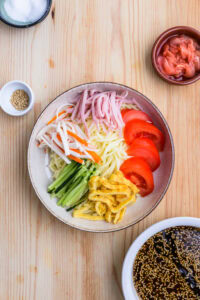
- Sprinkle with sesame seeds and benishoga (pickled ginger).Benishoga
- Pour the sauce over just before serving.
Notes
constraintis to let all the ingredients cool down properly. This can indeed take some time. The Hiyashi Chuka recipe is actually a matter of organization. So I recommend starting with the omelet and the vinaigrette, which need to be refrigerated. Additionally, slicing the omelet is a step that can also take some time. And no stress, it’s absolutely not difficult. While it’s cooling, you can tackle the vegetables. Keep them cool afterwards as well; the result will only be better. As for the noodles, you just need to rinse them in cold water after cooking.
